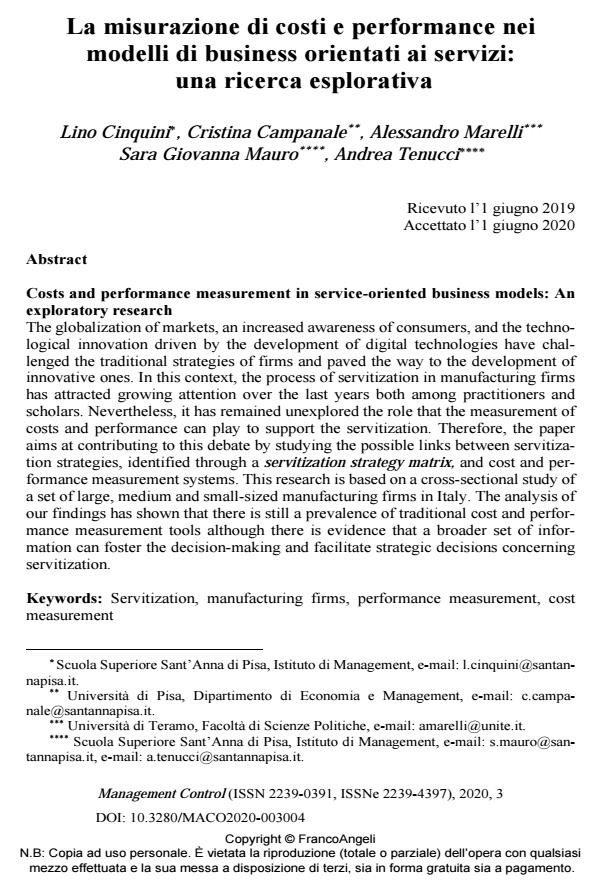Costs and performance measurement in service-oriented business models: An exploratory research
Journal title MANAGEMENT CONTROL
Author/s Lino Cinquini, Cristina Campanale, Alessandro Marelli, Sara Giovanna Mauro, Andrea Tenucci
Publishing Year 2020 Issue 2020/3
Language Italian Pages 27 P. 59-85 File size 271 KB
DOI 10.3280/MACO2020-003004
DOI is like a bar code for intellectual property: to have more infomation
click here
Below, you can see the article first page
If you want to buy this article in PDF format, you can do it, following the instructions to buy download credits

FrancoAngeli is member of Publishers International Linking Association, Inc (PILA), a not-for-profit association which run the CrossRef service enabling links to and from online scholarly content.
The globalization of markets, an increased awareness of consumers, and the tech-nological innovation driven by the development of digital technologies have chal-lenged the traditional strategies of firms and paved the way to the development of innovative ones. In this context, the process of servitization in manufacturing firms has attracted growing attention over the last years both among practitioners and scholars. Nevertheless, it has remained unexplored the role that the measure-ment of costs and performance can play to support the servitization. Therefore, the paper aims at contributing to this debate by studying the possible links between servitization strategies, identified through a servitization strategy matrix, and cost and performance measurement systems. This research is based on a cross-sectional study of a set of large, medium and small-sized manufacturing firms in Italy. The analysis of our findings has shown that there is still a prevalence of traditional cost and performance measurement tools although there is evidence that a broader set of information can foster the decision-making and facilitate strategic decisions concerning servitization.
Keywords: Servitization, manufacturing firms, performance measurement, cost measurement
- From cost control to cost management: How is the current state of the Italian context? Anna Lucia Missaglia, Alberto Bubbio, Dario Gulino, in MANAGEMENT CONTROL 1/2024 pp.203
DOI: 10.3280/MACO2024-001010
Lino Cinquini, Cristina Campanale, Alessandro Marelli, Sara Giovanna Mauro, Andrea Tenucci, La misurazione di costi e performance nei La misurazione di costi e performance nei modelli di business orientati ai servizi: una ricerca esplorativa modelli di business orientati ai servizi: una ricerca esplorativa in "MANAGEMENT CONTROL" 3/2020, pp 59-85, DOI: 10.3280/MACO2020-003004